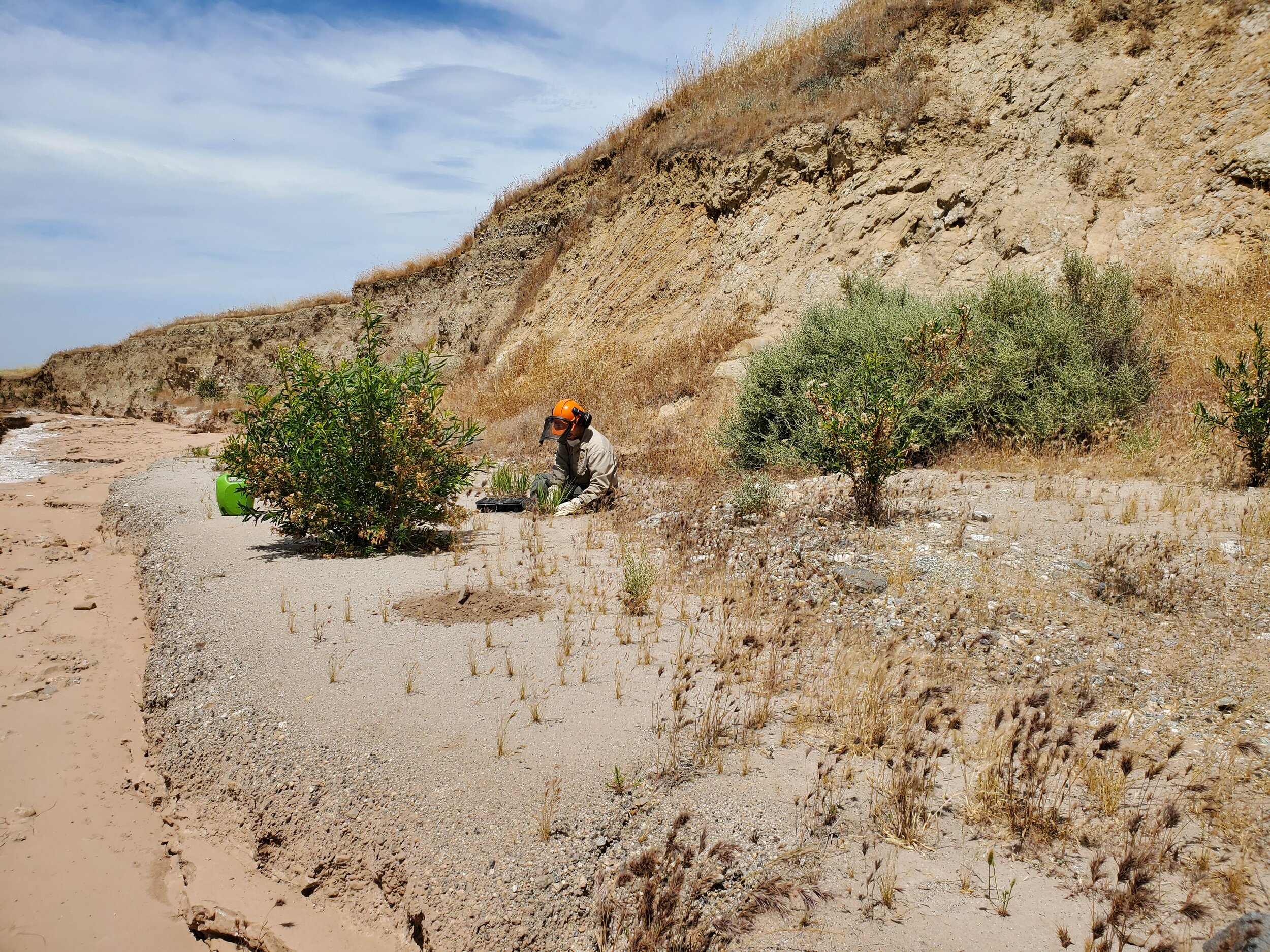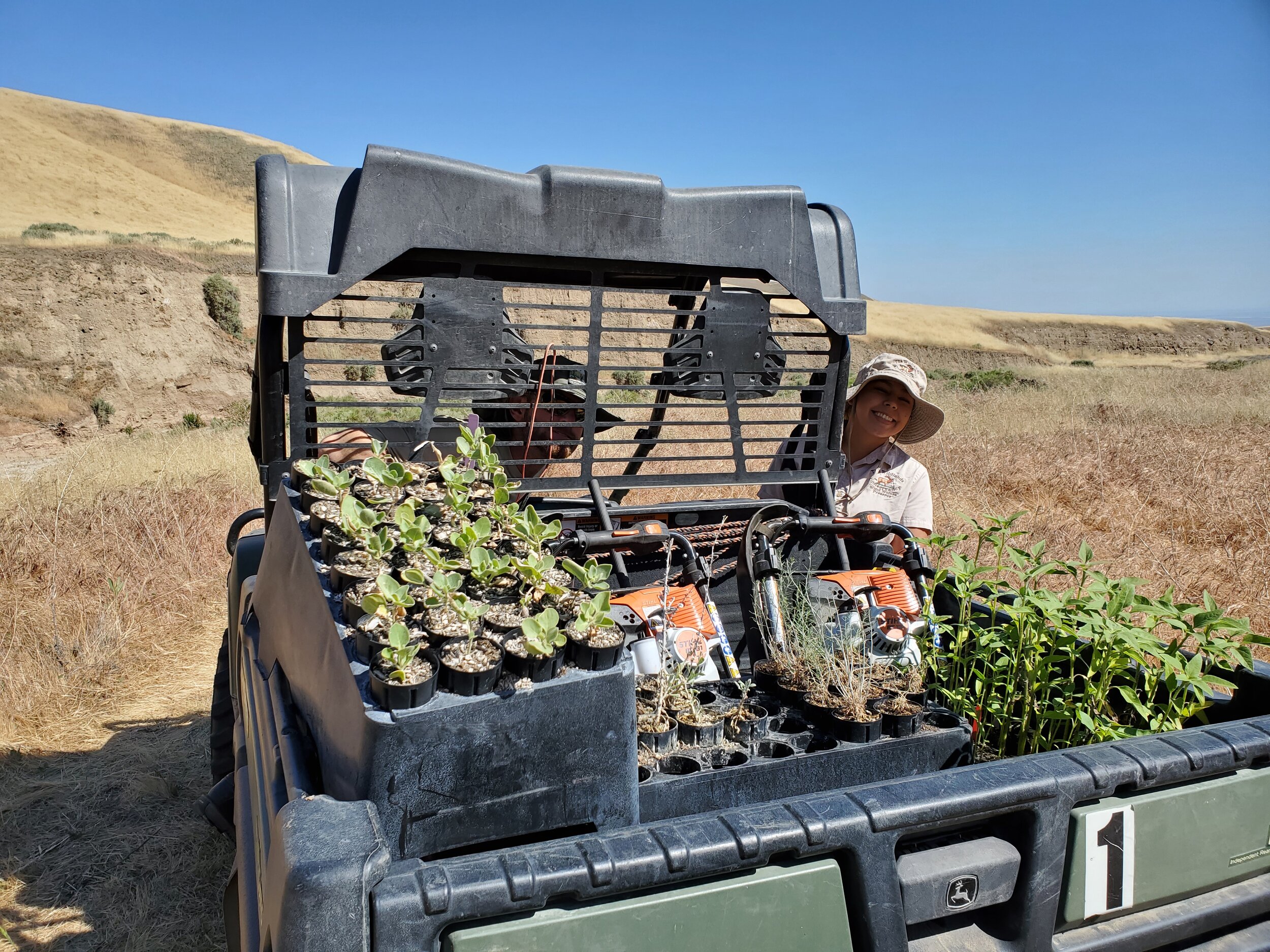SANTIAGO CREEK RESTORATION
In partnership with The Wildlife Conservation Board and the United States Department of Agriculture (USDA) Natural Resource Conservation Service, Wind Wolves Preserve has been restoring 6.7 acres of riparian (stream-side) habitat along Santiago Creek, a seasonal creek on the western edge of the preserve. Prior to initiating this project, the site was infested with invasive salt cedar trees (Tamarix), which degraded the habitat and outcompeted our native plant species. Over the last 5 years, staff and volunteers have removed the salt cedar, replacing them with over 10,000 native plants, including mulefat, Fremont cottonwood, narrowleaf willow, California buckwheat, bladderpod, and other trees and shrubs. This summer the Wind Wolves Preserve team put the last seedlings in the ground and have continued to monitor the site with regular waterings.



Salt cedar, also known as tamarisk, tolerates a wide range of conditions, able to survive heat, cold, flood, drought, and even saline (salty) environments. Salt cedar uses high amounts of water, enough to slow the flow of nearby rivers and streams, and with its long, central taproot, it can reach moisture thirty feet beneath the surface. It stores excess salt in its leaves, which it discards each winter. The salt then accumulates in the top layer of soil, inhibiting the growth of salt-intolerant species. Thus, salt cedar can eliminate its competition by creating conditions unlivable for most other species. Once established, salt cedar is notoriously difficult to eradicate, as it reproduces readily from both seeds and root sprouts. This tree originates from Eurasia but is now found throughout the United States, after first having been introduced to North America as an ornamental (decorative) tree.
